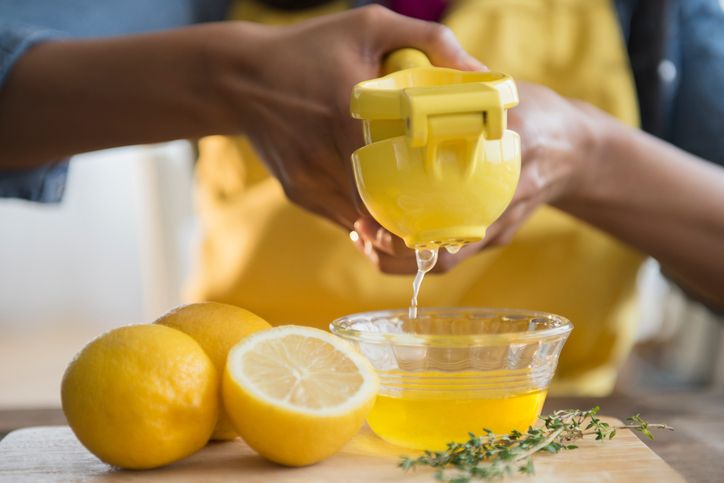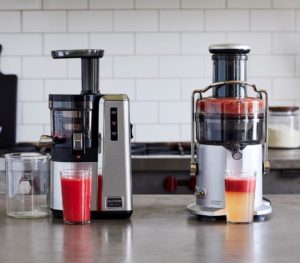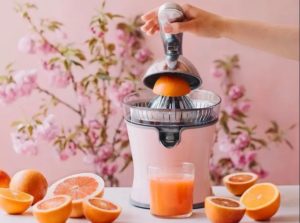It is difficult to dispute that fresh juice produces the best beverages. The most common fruits are lemons, limes, and oranges, so it makes sense to use fresh citrus whenever possible, including in recipes. The good news is that these fruits are also the simplest to juice.
There are multiple ways to extract fresh juice from citrus fruits in minutes. Most of the techniques require a tool, though several inexpensive juicers can be stored in a kitchen or bar drawer.
Preparation for Optimum Citrus Juice Yields
Preparing fruit for juicing is simple: Thoroughly rinse the peel and, in almost all cases, cut the fruit in half. The only exception is when juice needs to be “squeezed,” in which case a wedge is optimal.
Several steps can be taken to extract the most juice possible from the fruit:
- Warming citrus to room temperature before juicing will significantly increase the yield of juice. If you refrigerate fruit, leave it out at room temperature for at least 30 minutes. Quickly reheat the fruit in the microwave for 10 to 15 seconds.
- Before slicing the fruit, roll it under your palm while pressing down firmly on the countertop.
How Much Juice Do Citrus Fruits Contain?
Each piece of fruit contains an unusual amount of juice. Variety, growing environment, and fruit size influence the yield of citrus fruit juice. On average, you can anticipate receiving:
- 1 grapefruit = 3/4 cup or 5 to 6 ounces
- 1 orange = 1/4 cup or 2 to 3 ounces
- 1 lemon = 3 tablespoons or 1 3/4 ounces
- 1 lime = 1 tablespoon or 1/2 to 1 ounce
How to Keep Citrus Juice Fresh
Use citrus juice as soon as possible and squeeze only what you need. However, citrus juice can be stored in the refrigerator for two to three days. Choose food-safe glass or plastic containers with airtight lids. Because light can hasten the deterioration of juice, opaque or dark bottles and jars are preferable to transparent ones (this is typically not an issue in a dark refrigerator). Optionally, citrus juice may be frozen for several months. Once frozen, transfer ice cubes from ice cube trays to a freezer-safe container.
!! Wash Your Hands and Avoid Sunburn!!
The acids in citrus juices can cause skin irritation. If you have cuts or rough skin on your hands, you should wash them frequently before, during, and after juicing. If you are extremely sensitive, you may even consider wearing gloves. In addition, severe sunburn can result if citrus juice remains on the skin and is exposed to direct sunlight. It is referred to as Phyto photodermatitis or “margarita dermatitis” due to its association with making margaritas with lime juice in the summer.
Fresh Citrus Juice Splash? Simply Squeeze It!
Numerous food and beverage recipes require a splash, squeeze, or squirt of fresh juice. This is the most common method for juicing lemons and limes, as it requires no tools other than a knife to cut the fruit into wedges.
For cocktails such as the gin and tonic, the wedge is frequently used as a garnish and allows the drinker to extract as much juice as desired. Other cocktails incorporate a splash during the mixing process, and several dishes call for a splash when plating.
How to Hand-Squeeze Citrus
- The fruit is cut into wedges (save some for the garnish).
- Hold the wedge over the glass or shaker with your thumb and index finger.
- Squeeze the fruit to extract all its juice.
Hand Squeezer
A citrus squeezer (also known as a hand press) is a hand-held device that uses pressure to extract fresh juices from lemons and limes. It is a favorite among bartenders and chefs due to its speed, efficiency, and storage convenience. A hinge joins the two arms that aids in pressing, all but the smallest seeds remain in the press, and the juice is typically pulp-free.
This type of citrus juicer is reasonably priced and is available in two sizes. The smaller model is designed for limes and small lemon varieties, whereas the larger model is suitable for lemons and limes of average height. Occasionally, one is available for oranges and larger citrus. Look for a stainless steel or heavy plastic squeezer when shopping. Under normal force, the handles of cheap plastic juicers can break.
Use this juicer for recipes requiring “1/2 of a lime’s juice” or similar small measurements. The juice can be squeezed directly into a glass or cocktail shaker. When a specific amount is required, squeeze (very carefully) a cocktail jigger over a measuring cup.
How to Juice Citrus With a Squeezer
- Halves the fruit.
- Place one half of the orange in the press so that the peel is facing upward, not the curve. This is counterintuitive, but it prevents juice from splashing into the face.
- Close the juicer and, using both hands, gently squeeze the two handles until all of the juice has been extracted from the fruit.
Citrus Reamer
A citrus reamer is typically more helpful for food preparation. Because the seeds and pulp must be strained, it is not commonly used for beverages. It is also considerably messier than the squeezer. However, it is a cheap, space-saving device that will suffice if it is your only option.
How to Juice Citrus With a Reamer
- The fruit should be halved.
- Hold one half in the palm of your hand with the pulp facing out at an angle of 45 degrees.
- Press the reamer into the pulp, twist to pulverize, and let the juices flow into a bowl or glass.
- Before combining beverages, strain the juice through a fine-mesh strainer to remove stray seeds and most of the pulp.
Manual Citrus Juicer
Another manual juicer is a great way to quickly and cheaply obtain fresh citrus juice. In addition to being small enough to fit in a drawer, these juicers are remarkable at extracting the most juice from the fruit.
This type of juicer comes in two primary configurations. They are typically available in a single size that accommodates lemons, limes, oranges, and smaller grapefruit, though larger sizes are also available.
- The glass juicer is a classic available in multiple sizes and is simple to clean. The larger tray holds the juice from several limes or lemons and one or two oranges and grapefruits. Smaller versions will necessitate more frequent disposal. These are extremely common to find used, and some vintage juicers have a great design. A strainer with fine mesh may be required for pulp- and seed-free juice.
- The alternative is typically stainless steel and has holes in the tray’s bottom, allowing seedless and pulp less juice to fall directly into a bowl (often included). They occupy more space but are still reasonably practical.
Use this juicer to create large quantities of juice for storage, stock up for a party, or make a pitcher of fresh lemonade.
How to Extract Citrus Juice Using a Manual Juicer
- Halve the fruit lengthwise.
- Place one half on the reamer, pulp-side down.
- Press firmly and rotate the fruit on the reamer to extract all its juice.
- If necessary, strain through a strainer with a fine mesh.
Need Many Citrus Juices? Obtain a Citrus Press
A countertop citrus press may be a worthwhile investment if you are serious about citrus juice. It requires manual force, is larger, and more expensive, but you get what you pay for, so choose a well-constructed press.
With this type of juicer, you can extract a large quantity of fruit in a short amount of time. If you have space in your kitchen, enjoy fresh orange or grapefruit juice, and want a little workout at the same time, this is the ideal option for you. In most cases, this press will produce pulp- and seed-free juice; however, a strainer may be required.
How to Extract Citrus Juice from a Press
- Halve the fruit lengthwise.
- Place one half, pulp-side down, on the reamer.
- Grab the arm and pull the handle down with force until all the juice has been released.
Use Electric Citrus Juicer
The last method for extracting juice from citrus fruits is arguably the simplest. Some individuals prefer electric juicers, while others find manual juicers more straightforward and effective.
Some citrus-specific electric juicers and models include a citrus attachment. The design of either option is essentially identical to that of any other citrus juicer, except that the electric motor rotates or vibrates the reamer.
This may be a good option if you’re looking for a kitchen appliance that can juice a variety of fruits and vegetables and citrus. If you have physical limitations that prevent you from using a manual option, this would be the best option. They are more costly, require additional storage space, and can be loud.
Related Posts
Best Juicer For Apples – Attempts At Evaluating Apple Juicers
Disclaimer: There are affiliate links in this post. At no...
Read MoreBest juicer for limes
Disclaimer: There are affiliate links in this post. At no...
Read MoreBest juicer for beginners
Disclaimer: There are affiliate links in this post. At no...
Read MoreBest orange juicer for energy every morning
Disclaimer: There are affiliate links in this post. At no...
Read MoreWhy Trust Us
You will find what you are looking for at dulceriabakery. From classic to luxury brands, you'll find both. We will help you to select appliances that fit your needs, budget and lifestyle. Whether you want to stop by to learn more — or plan to make a major purchase — we’ll treat you like family and assist you every step of the way. Shop with us today to receive friendly and experienced help along the way.




